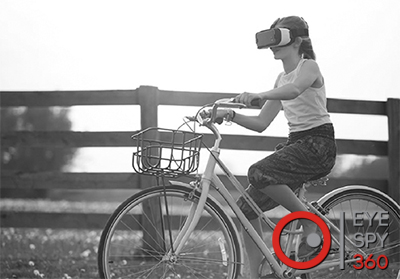2017-11-10
Physical Tours Versus Virtual Property Tours: What's Better?

There is a debate afoot in the Real Estate industry. New 360-degree photography and video, as well as fully immersive virtual property tours, are changing the way that we show potential buyers around properties. This new technology has delighted many agents who are reaping the time and cost-saving benefits offered by VR. On the other hand, there are the traditionalists, who argue that you simply cannot beat the human interaction and true engagement with a property that you get from viewing it in person.
Who’s right? Well, maybe there’s no clear cut answer. All we can do is offer you the pros and cons of each kind of property viewing to help you decide.
Virtual Property Tours
Currently, buyers go to see about 12-15 properties before settling on their choice. That is a very time-consuming process that can be a drain on buyers’ time, and also entails a financial cost in lost time for estate agents who often travel to hundreds of property viewings every month.
With the addition of virtual tours to property listings, buyers can narrow down their selection of properties to just a handful at most. This ensures they are only spending the time on in-person viewings for properties they are really interested in, saving time and money for both buyer and agent.
With no more than a standard internet connection, buyers can conduct a large portion of their property search at home or at work, just as they already do with online property listings. The difference is that the detail they get from a virtual property viewing is far superior to still imagery or video alone. With a virtual tour, the viewer has control over how much time they spend in each room, where they look and what they zoom in on.
Virtual tours are also advancing in their sophistication. EyeSpyLIVE™, for example, allows viewers to view the property together, even when not in the same place. This can also be done with an agent present in the virtual tour to answer questions and provide extra information. When the agent is not present, extra information can also be accessed via information labels within the tour, and the viewer can even look outside with Google Street View.
In short, for the buyer, the experience is pretty comparable to an in-person viewing and beneficial in many ways as it eases the house-hunting process.
For agents, along with the cost and time-saving benefits of not having to travel to numerous in-person viewings, there are a few other plus points.
Firstly, with less in-person viewings to be made, the number of human staff members can be optimised. It could result in the need for, say, one less staff member. The initial financial outlay in creating the virtual tour of a property is significantly less than a staff member’s annual salary, particularly when the agency is signed up to an inclusive software subscription for repeated virtual tour creation for one monthly fee.
Secondly, there’s the opportunity that virtual tours provide to attract buyers from further afield, buyers who may be unable or unwilling to travel long distances (sometimes from abroad) in order to view properties.
Finally, of course, there’s the fact that the use of virtual tours to market property, positions an agency as a market leader. Technological innovation allows a company to be ahead of the times, and delivering that added value to customers (and sellers too) is a surefire way to drive more custom.
Traditional In-Person Property Viewings
Well, there are a lot of benefits to virtual property tours. Perhaps we are a little biased. That being said, it’s important to look at the other side of the coin.
Viewing property in person is something that has always happened. Of course, in the past, there was no alternative. Until very recently, still imagery was the only way that buyers could get an idea of a property before viewing it in person. It has also only been in the past few years, and only on certain properties, that video tours have been used for property marketing purposes.
Despite the overheads, in terms of both cost and time, associated with in-person property viewings, they will always have the benefit over virtual tours as being real. Whilst you can view a virtual tour from many angles, and with EyeSpyLIVE™, even speak with an agent as you would in person, few people would argue that anything beats being there in the flesh.
There are certain factors that simply cannot be communicated through any sort of digital tour. For example, sound, smells, and the general feel of a property cannot be replicated. Nor can a viewer glance over the fence to get an idea about who their neighbours might be. As in-depth as a virtual tour may be, you can’t get deep into the nooks and crannies to see those niggling details that can make all the difference.
These setbacks, however, don’t really rule out the virtual tour’s role in the property viewing space. What the virtual tour primarily serves to do is to reduce the number of properties a buyer goes to see in person before buying. It rarely replaces the act of viewing in person altogether, and this is not to be expected. The estate agent still most definitely has a role, and will continue to be instrumental for the foreseeable future. Virtual tours are not intended to replace in-person viewings by any means, rather to qualify an agent's leads.
As the traditionalists note, there is no substitute for the real thing. Equally, however, anything that makes ‘the real thing’ easier and more efficient should certainly not be ignored.
